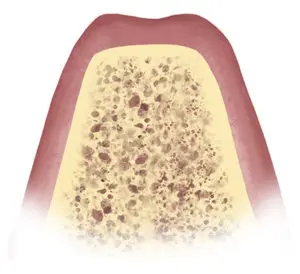Initial Consultation
 The first step is an examination and consultation with your dentist to determine whether or not you are a candidate for implant treatment. This usually involves x-rays and may include taking impressions for models of your teeth. During the examination, your dentist will be evaluating the area(s) of your mouth where teeth are missing and the type of replacement teeth that will best meet your needs. A review of your health history will indicate whether there are any medical conditions that could prevent you from being a candidate for implant treatment.
The first step is an examination and consultation with your dentist to determine whether or not you are a candidate for implant treatment. This usually involves x-rays and may include taking impressions for models of your teeth. During the examination, your dentist will be evaluating the area(s) of your mouth where teeth are missing and the type of replacement teeth that will best meet your needs. A review of your health history will indicate whether there are any medical conditions that could prevent you from being a candidate for implant treatment.
Surgical Evaluation
Following the initial consultation, you will be referred to one of our surgeons for a comprehensive surgical evaluation. This will typically be for the purpose of further evaluating the quality and quantity of available bone to determine the number of implants necessary, as well as whether additional procedures may be needed to obtain the desired functional and esthetic result.
If you have already lost a significant amount of bone, the need for procedures to add (graft) bone, or create new bone will also be evaluated. Special 3D imaging might be recommended to provide a more detailed view of your teeth and the surrounding bone and facial structures.
Once the surgical evaluation has been completed, a treatment plan will be developed with your general dentist to meet your individual functional and esthetic needs.
Implant Placement Procedure
The implants are placed in the bone using a specialized surgical technique. Following this procedure, the implants are left undisturbed for a period of several months so that the bone can remodel around the implants to form a strong biological bond to them. During this bone-remodeling phase, you may have some type of temporary replacement teeth, so that you never have to be without teeth during treatment.
Abutment Attachment Procedure
Following the appropriate bone-remodeling period, a small connector post called an abutment is attached to each implant. If not placed with implants, these are usually temporary attachments that allow soft tissue (gums) to heal around implants.
Fabrication of Replacement Teeth
Depending on the type of implant placed, your dentist will take an impression that may include adjacent teeth and the implant with specialized attachments. This impression will be sent to a lab where the laboratory technician will fabricate a permanent abutment and crown. Your dentist will attach the permanent abutment and crown and make any adjustments to make sure it fits properly.

Bone Grafting Procedures
Foundation for Dental Implant Placement
Many times due to progressive disease, infection or trauma, bone and soft tissue are lost in areas around the teeth. In addition, when teeth are removed and not replaced with dental implants, the bone that supported these teeth resorbs, or deteriorates.
When there is insufficient bone to provide the solid foundation necessary for an implant, a bone graft is recommended. The bone grafting material may be bone from another area of the patient’s mouth, synthetic bone, or a combination of both. This bone augmentation procedure can often be accomplished at the same time as implant placement so that no additional surgical procedures are necessary.
Improvement of Anterior Esthetics
When the bone is thin, such as the bone beneath the gum tissue above the upper front teeth, it resorbs much quicker. This may lead to a visible defect. When multiple anterior teeth are missing, the bone resorption eventually may lead to collapse of the lip, which affects the facial profile and appearance.
Long-term scientific and clinical studies conducted by the leaders in implant dentistry show that in most cases, esthetics in the front of the mouth are greatly enhanced with bone grafting. For patients who have lost bone, it is possible to increase or replace the bone with grafting techniques and successfully place implants. In addition, the defects in the bone can be corrected to create favorable facial contours and tissue support in order to achieve optimal esthetic results.
Preservation of Bone Following Tooth Removal
If you are facing impending tooth loss, our doctors are able to remove the tooth using a special technique that minimizes discomfort and promotes rapid healing. This technique also preserves the bone surrounding the tooth, which is critical for implant placement.
The socket that remains when a tooth is removed is sometimes grafted to facilitate healing and preserve a significant amount of bone width that would normally shrink during the healing period.


